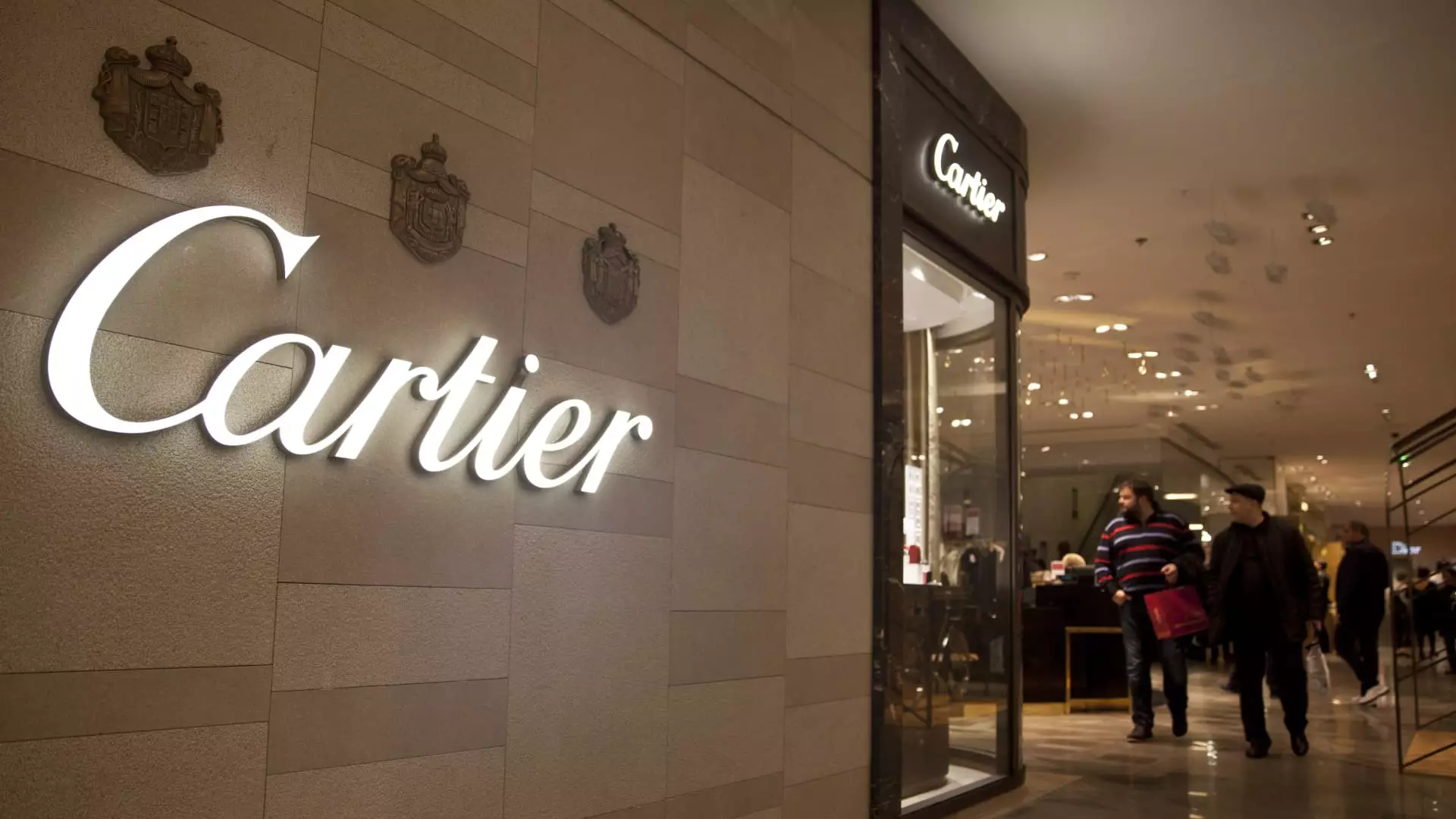The luxury goods conglomerate Richemont, recognized prominently for its ownership of the prestigious Cartier brand, has recently reported a remarkable financial performance that defies the prevailing challenges in the global luxury sector, especially in China. The company’s fiscal third-quarter sales achieved a notable 10% increase compared to the previous year, showcasing the resilience of high-end consumer spending. For the three months leading to December, Richemont recorded sales of €6.2 billion ($6.38 billion) at constant exchange rates—an all-time high for the quarter, which has surprised analysts who anticipated a much more modest increase.
Following the announcement of these positive sales figures, Richemont’s share price experienced a significant surge, witnessing a 17.15% boost early on Thursday morning in London. This sharp increase not only reflects investor confidence in Richemont but also suggests a broader sentiment of optimism surrounding the luxury market’s recovery following a challenging economic period. Notably, stocks of other luxury giants such as Christian Dior, LVMH, and Hermes also experienced gains, signaling a potential rebound in the European luxury sector, bolstered by the recent holiday shopping season.
Despite the overall positive sales report, Richemont’s growth narrative is not without its hurdles. The Asia Pacific region presented a stark contrast to the gains made elsewhere, with a 7% decline in sales, primarily attributed to an 18% drop across mainland China, Hong Kong, and Macau. Once seen as a driving force for luxury consumption, the Chinese market’s struggle to overcome the economic repercussions of the pandemic is a significant concern for Richemont and its competitors. The implications of this downturn are noteworthy as they highlight a shifting landscape where luxury brands may need to recalibrate their strategies in burgeoning yet volatile markets.
Over the past year, Richemont’s share price has displayed significant volatility, particularly influenced by shifts in its executive leadership. The appointment of Nicolas Bos as the new CEO, who formerly led the Van Cleef & Arpels brand, heralded a new chapter for the company and has contributed to the stock’s upward trajectory, with a year-to-date gain of 28.75%. This leadership transition reflects the substantial changes taking place within the organization, as it aims to adapt to evolving consumer preferences and market dynamics.
These recent third-quarter results stand in stark contrast to the company’s performance in the first half of the fiscal year, where Richemont reported a 1% decrease in sales. The challenging economic backdrop, especially in China, had overshadowed previously favorable conditions, signaling caution among luxury retailers. Yet, with sales for the six months ending September totaling €10.1 billion, the recent uptick suggests that Richemont is tentatively re-emerging from the challenges that plagued it recently.
Luca Solca, a senior analyst specializing in global luxury goods at Bernstein, provided commentary underscoring the significance of Richemont’s latest figures in the context of the broader luxury market. He emphasized that the robust results from Europe and the wider Asia-Pacific region, excluding greater China, are indicative of a rebound, driven by enhanced local demand and increased tourist activities. This growing momentum provides a hopeful outlook, suggesting that the third quarter of 2024 may represent a pivotal turning point in the industry’s recovery.
Richemont’s impressive fiscal third-quarter results reveal a crucial moment for the luxury sector, characterized by resilience amidst adversity. The company’s ability to generate record sales despite regional setbacks signals a potential revival in consumer confidence. However, as the landscape of luxury retail continues to evolve, marked by economic fluctuations and shifting consumer behavior, Richemont and similar luxury brands must remain agile. The coming months will be pivotal for the company’s strategic positioning and the overall luxury market’s health as it seeks to navigate through the post-pandemic era.

